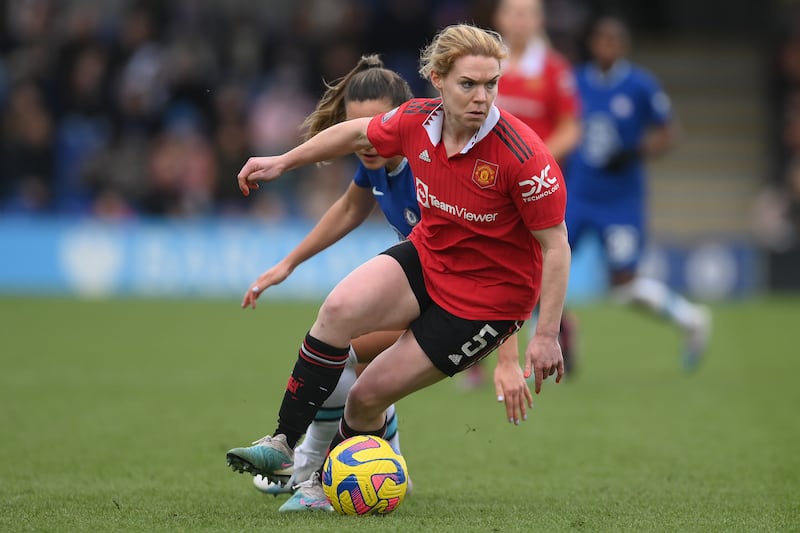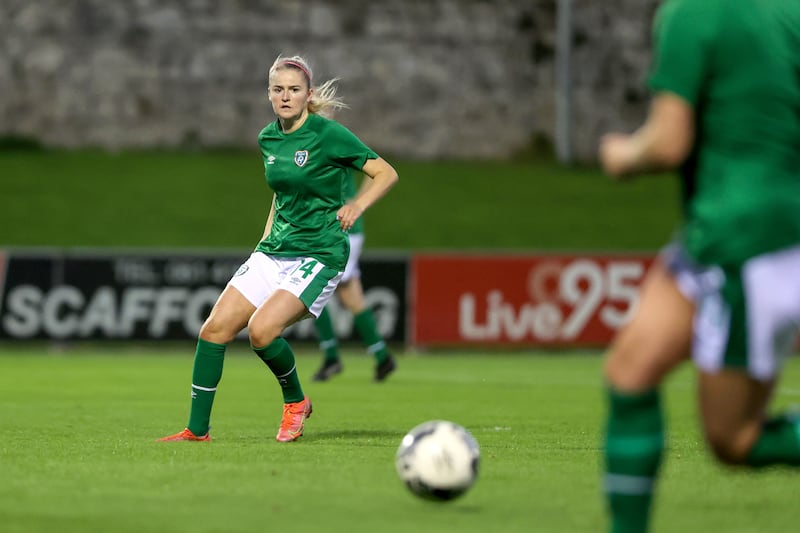For the uninitiated, the number of Irish players without a club as the World Cup looms is alarming. Especially Brighton releasing Megan Connolly.
The other Megans – Campbell and Walsh – must also find new clubs next season while Aston Villa have parted ways with Ruesha Littlejohn.
This list will grow. Single-season contracts tend to run out in the women’s game before a new club comes calling. It’s a different business model to men with multi-year deals only beginning to appear.
Naturally, men’s and women’s football are still connected. Take Leicester City’s relegation from the Premier League. I expect this will impact the female squad budget next season.
Or the takeover at Manchester United; for someone like Aoife Mannion, the new owners’ attitude to female football could directly impact her career.
Megan Connolly is 26, entering her prime, so other WSL clubs should be interested. A brilliant college career at Florida State means she will have options. I would be very surprised to learn that Brighton cut her loose, and not the other way around. It probably makes financial sense for her to let that contract run out and, while nobody wants to be travelling to Australia without a club, the World Cup does offer the best possible shop window.
Surely, clubs will table offers before her value soars. Connolly’s presence in the Ireland midfield frees Denise O’Sullivan from defensive duties while her set piece delivery lightens the load on Katie McCabe, and that makes Ireland a better side.
In the coming weeks plenty of Irish players will be distracted by not knowing where their future lies next season, be that England, Europe or America.
Injury can scupper everything. Look at Eleanor Ryan-Doyle. Eleanor broke her foot near the end of the season but after being released by Birmingham City she still has the injury but no income. The same applies to Littlejohn and Megan Campbell, two established internationals with injury profiles that tend to result in one-year-deals being offered. Suffer another injury and the same situation could happen next summer. Quite easily, that becomes a player’s career loop.

Ella Toone recently signed a long-term contract with Man United, but she is 23, English and scores a goal every other game for her country. Few Irish players compare. Only Katie McCabe has a club like Chelsea interested in signing her while contracted to Arsenal. The rest must wait until they are free agents. This brings unwanted stress entering a major tournament.
The World Cup was an unattainable experience for Irish players, until now. The idea of being part of this adventure almost convinced me to sabotage my current career. You see, 99.9 per cent of female athletes need to map out their careers – their actual careers – before life as a professional footballer can begin.

Former Ireland manager Colin Bell made it very clear around 2017 and 2018 that an amateur player will struggle to win caps going forward. We were encouraged to leave the League of Ireland, to leave home.
The writing was on the wall for a while but coming off the bench against Northern Ireland for my 35th and final cap rammed this message home.
The drop in salary for someone in their late 20s, living and working in Dublin, to sign a one-year contract at a first division club in England, Scotland or a mid-table European side was something I did consider. I knew the risks were enormous but I wanted to help Ireland qualify for Euro 2020. I wanted to be a part of history. I wanted to keep playing for my country.
I also wanted to maintain my financial independence. It was a hard pill to swallow but, using simple logic, it made no sense to turn pro at 26. I also worried about the lifestyle; all that free time would not have suited me at all.
So I retired from international football just as I was entering my prime. Maybe I should have sacrificed my job, moved to the UK and kept the starting Irish midfielders honest at training. Instead, I walked before being pushed.

I am still playing for Peamount United, where we see the gulf in physical standards, between the domestic and professional game, grow year on year.
The financial rewards are also growing but at a slower pace. The WSL is now the best women’s competition in the world but this decreases the chances of Irish players being scouted. Men’s football over the past 20 years offers a cautionary tale for the FAI and women’s clubs. They must come up with a plan to bridge the yawning gap. Otherwise, we will send girls away to exist on barely liveable wages in countries and environments we know next to nothing about. How has that worked out for 99.9 per cent of the lads?

My tuppence worth on how Irish football can continue to thrive during this rapidly growing sport comes down to education. To align third level institutions with clubs would offer two strands of development for the wave of talent coming after Abbie Larkin, Erin McLaughlin and Tara O’Hanlon. It begins by properly caring for the needs of the individual.
Ideally my clubmates, McLaughlin and O’Hanlon, break into the Ireland squad this summer, but their days at Peamount appear to be numbered. At just 18, O’Hanlon possesses all the ingredients needed for a professional career. She is technically excellent on the ball and, like Erin, has a wise head on young shoulders.
Others will need time to prepare for the rigours of professionalism. They will also need to understand that a starting salary for primary school teaching is €8,000 more than an initial one-season-pro-contract in the UK or Europe.
The dream of turning pro comes with a catch; you live just above the bread line. My faith in the FAI would be enhanced by the creation of a semi-professional League of Ireland, coupled with scholarships into higher education.
Keep our teenage talent at home until these girls mature into women. Only then send them abroad to shine as bright as possible. This requires leadership and joined-up thinking.


















